This report highlights the requesters that create the most work items.
The objective is to analyze the origin of work intensity.
This report allows a comparison of segmentations. You can select up to 4 segmentations. The management of segmentations makes it possible to compare or highlight desired requesters.
The periodic filter considers all work items:
- If you choose the “Started on” option, the selection will then be made on all work items that started in the selected period and that correspond to the chosen segmentation.
- If you choose the “Finished on” option, the selection will then be made on all work items which were finalized in the selected period and which correspond to the chosen segmentation.
- If you choose the “Started on and still open” option, the selection will then be made on all the open work items that started in the selected period and that correspond to the chosen segmentation.
The graph then highlights the number of work items by requester.
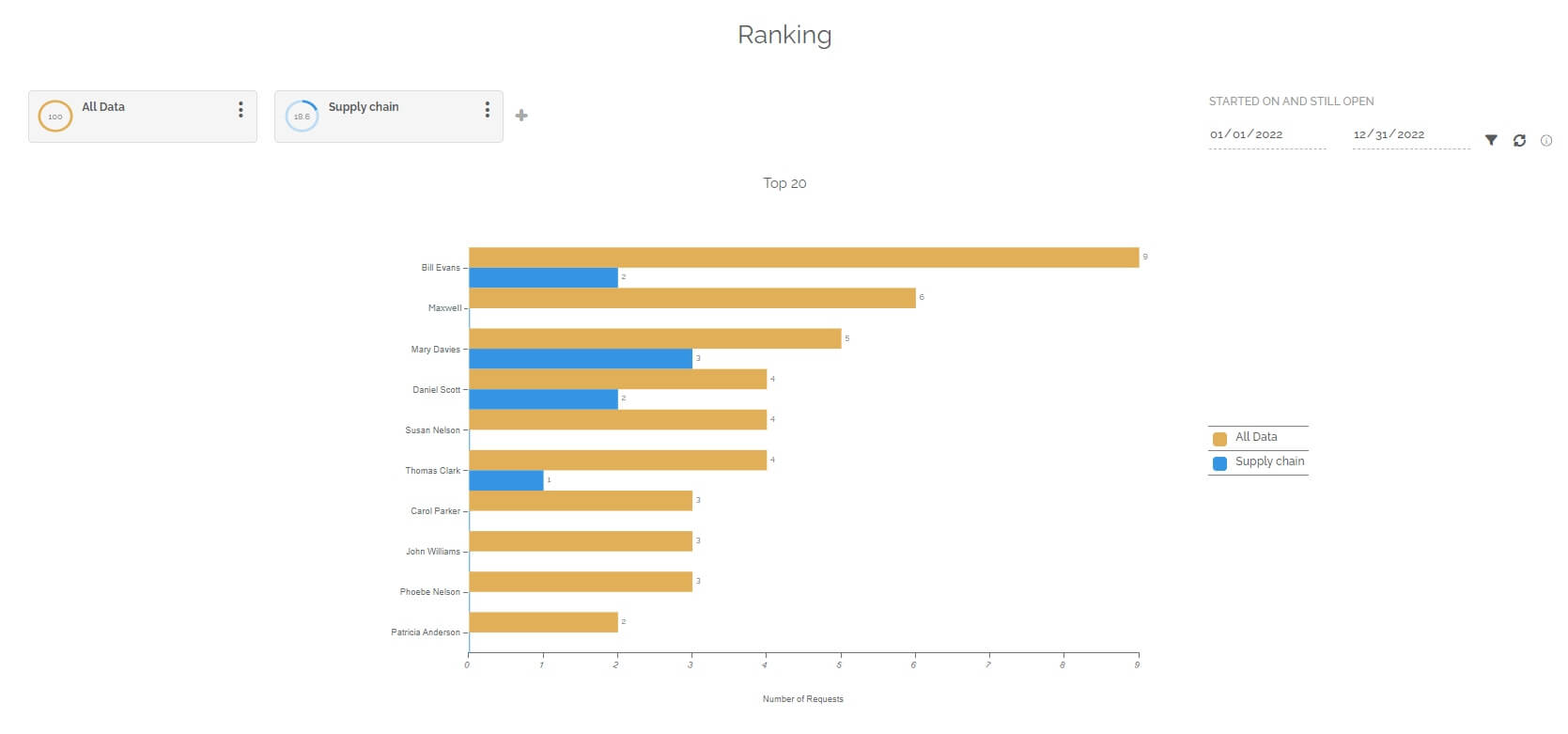
Below the graph you will find a table divided into several parts. Each part represents a segmentation with the following information:
- The name of the requester’s department.
- The requester concerned.
- The number of work items created by the requester.
For information: the table is not limited in terms of display, unlike the graph. The table displays all the data corresponding to the selection of segmentation and periods.

You can change view to have a pivot table by clicking on this icon:

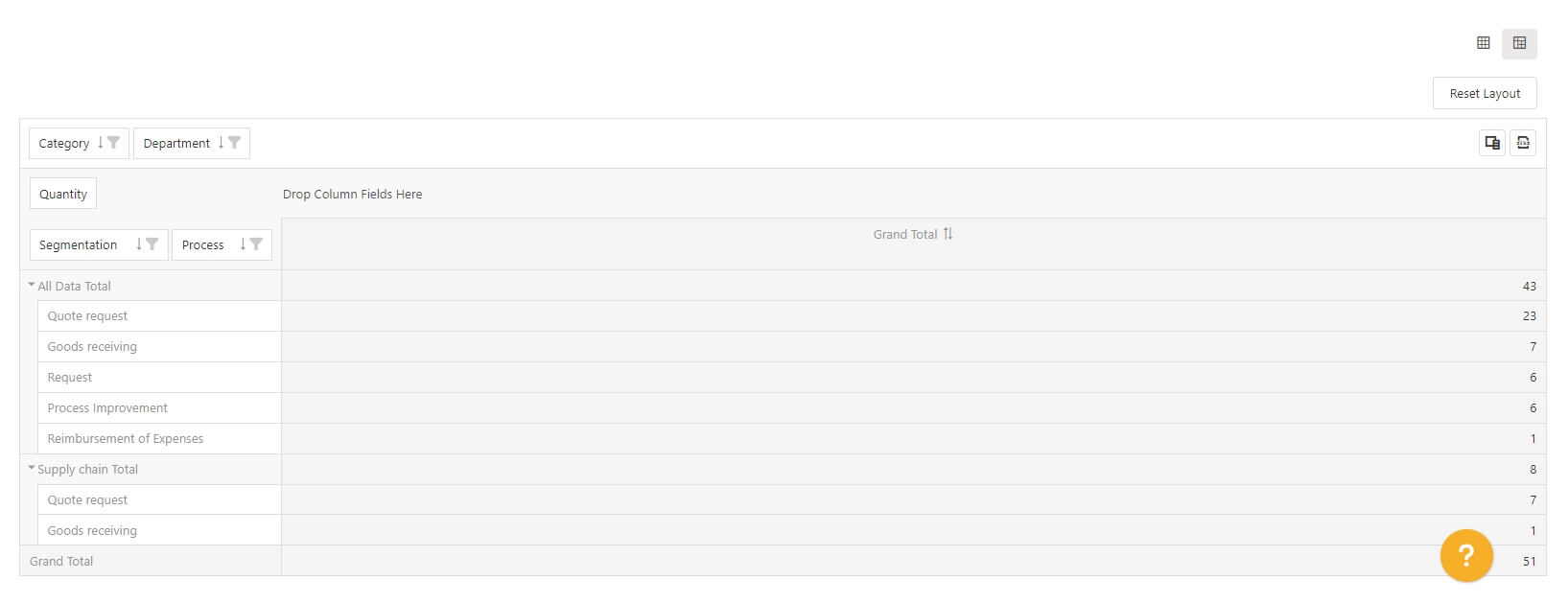
You can also display the pre-configured pivot table with one row results. The objective is to access this vision with the result displayed and then change certain parameters to further analyze the result of a particular line.
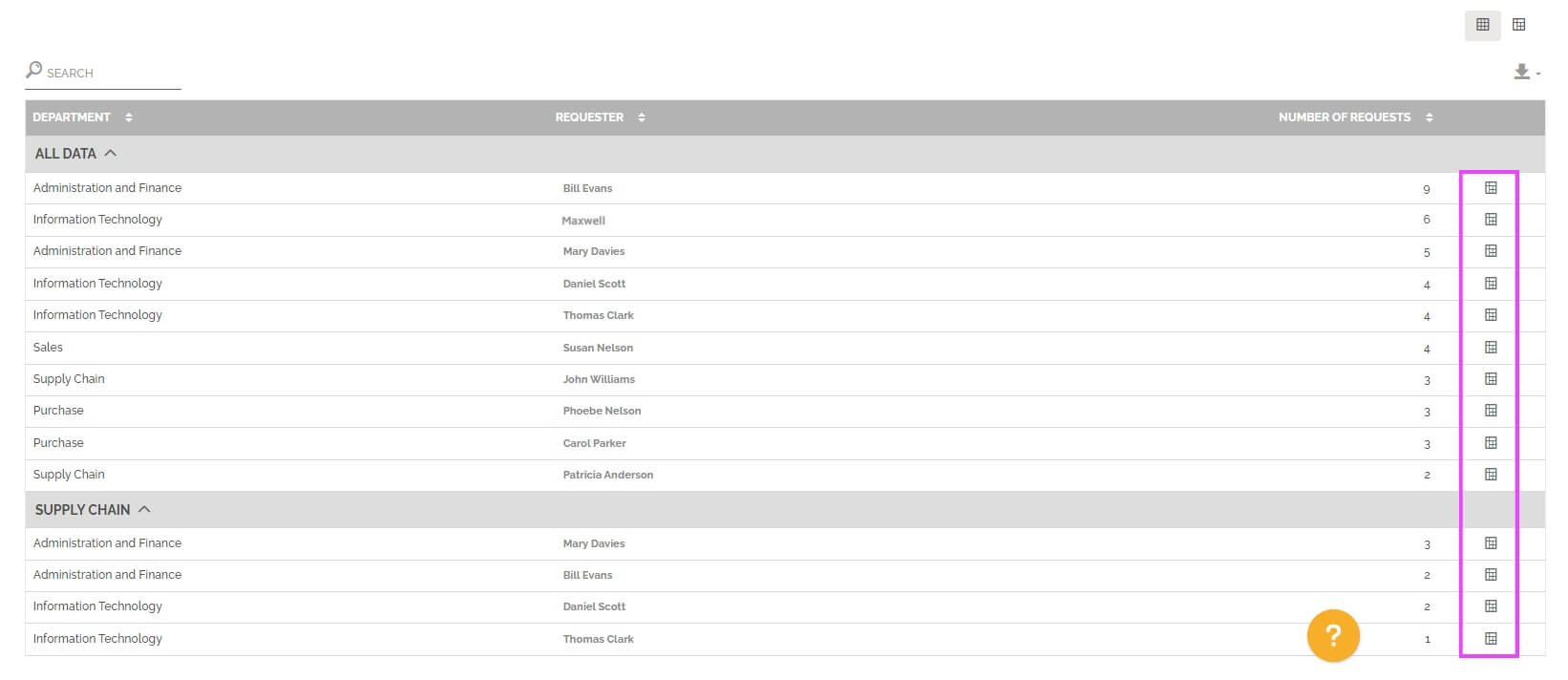
To learn more about this type of table: See the section “Pivot grid” in Analytics.
This report also allows you to make the comparison between two periods. You must select this option in the period settings:
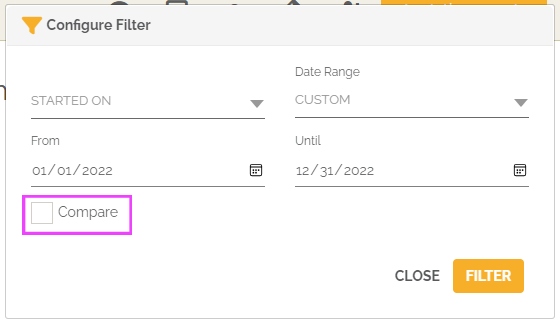
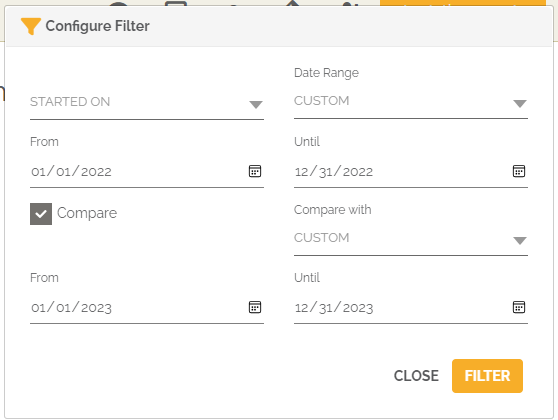
From then on, the chart and table will show the evolution of the number of work items per requester.


If the number of requests (creation of work items) increased between period 1 and period 2, then the evolution is positive and there is a red arrow to indicate a negative marker, because the work intensity increased.
For information: the column “Number of requests variation” highlights the number of work items created by the requester concerned.
